Sclerotiophoma versabilis (Boerema et al.) L.W. Hou, L. Cai & Crous, comb. nov.
MycoBank number: MB 833530; Index Fungorum number: IF 833530; Facesoffungi number: FoF 11532; Fig. 22
Basionym: Phoma versabilis Boerema et al., Persoonia 16: 154. 1996.
Synonym: Ascochyta versabilis (Boerema et al.) Qian Chen & L. Cai, Stud. Mycol. 82: 190. 2015.
Description: Boerema et al. (1996).
Typus: Germany, Westfalen, Oberdresselendorf, on stems of Cardamine impatiens (Brassicaceae), Oct. 1925, A. Ludwig (holotype L 995.229.369).
Materials examined: Denmark, from human toenail, date unknown, D.M. Saunte, culture CBS 124689. The Netherlands, Wageningen, from a stem of Silene sp. (Caryophyllaceae), Jun. 1997, specimen CBS H-24329, culture CBS 876.97 = PD 82/1008.
Notes: This species was introduced by Boerema et al. (1996), on stems of Cardamine impatiens collected in Germany (Boerema et al. 1996). Later, Boerema et al. (2004) described a representative strain for Phoma versabilis (CBS 876.97) which morphologically agreed well with the original description.
In the present study, Phoma versabilis was re-examined based on two isolates (CBS 876.97 and CBS 124689). In our phylogenetic analysis, these two isolates formed an independent lineage which was distant from other genera in Didymellaceae, closely related to the genus Similiphoma and Epicoccum (Fig. 1). Thus, Sclerotiophoma was introduced to accommodate this species. The type species of this genus is characterised by producing pycnosclerotia, which gradually develop into poroid pycnidia.
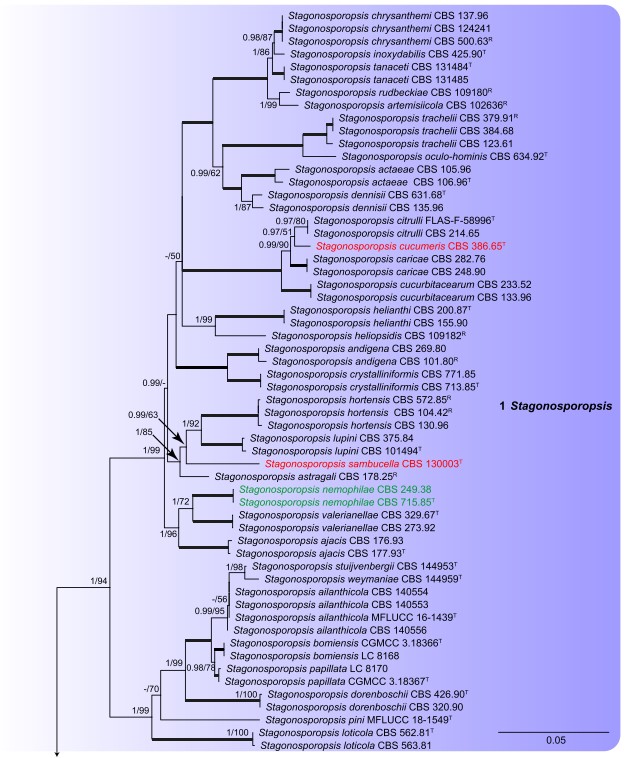
Fig. 1. Phylogenetic tree inferred from a Maximum Likelihood analysis based on a concatenated alignment of LSU, ITS, rpb2 and tub2 sequences of 597 strains representing Didymellaceae and outgroup sequences. The RAxML bootstrap support values (MLBS) above 50 % and Bayesian posterior probabilities (BPP) above 0.80 are given at the nodes (BPP/MLBS). Some of the basal branches were shortened to facilitate layout (the fraction in round parentheses refers to the presented length compared to the actual length of the branch). The scale bar represents the expected number of changes per site. Genera are delimited in coloured boxes, with the genus name indicated to the right. Strains with special status are indicated with a superscript letter after the accession number (R: representative; T: ex-type). The new species are printed in red font and new combinations in green font. The tree is rooted to Coniothyrium palmarum culture CBS 400.71, Neocucurbitaria aquatica culture CBS 297.74 and Pleiochaeta setosa cultures CBS 496.63 and CBS 118.25.
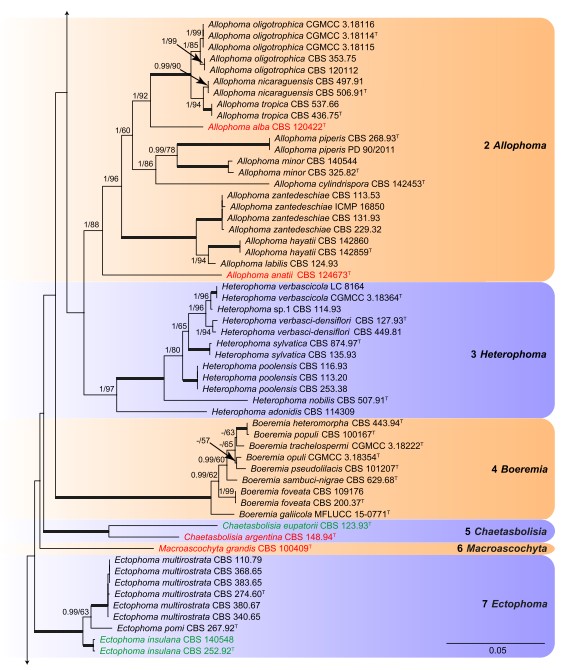
Fig. 1. (Continued).
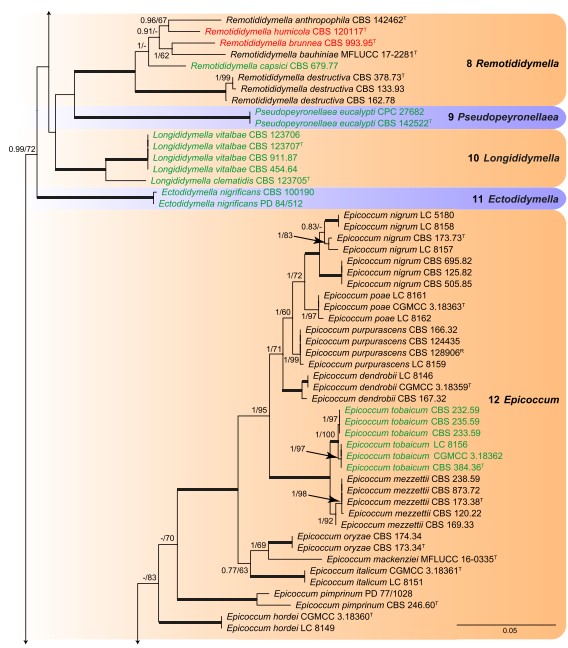
Fig. 1. (Continued).
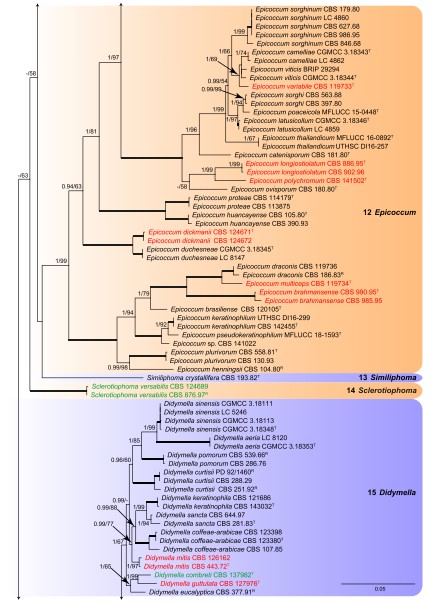
Fig. 1. (Continued).
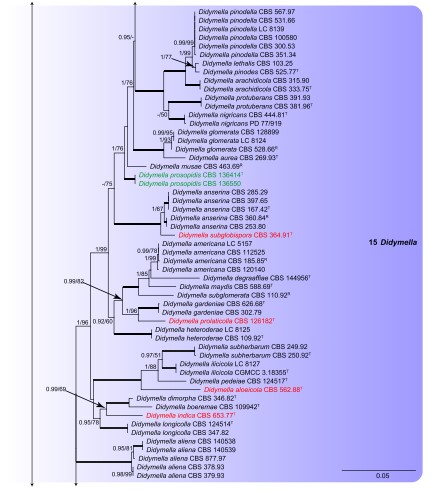
Fig. 1. (Continued).
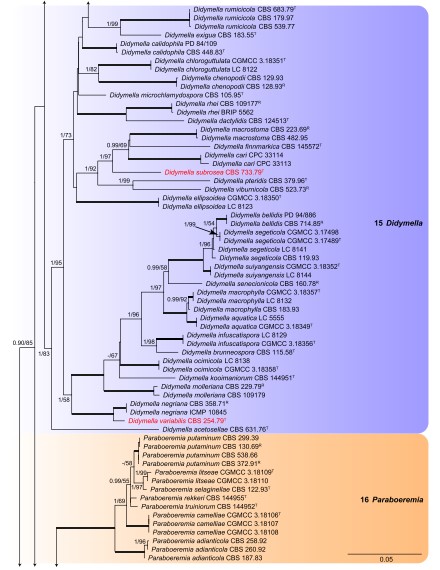
Fig. 1. (Continued).
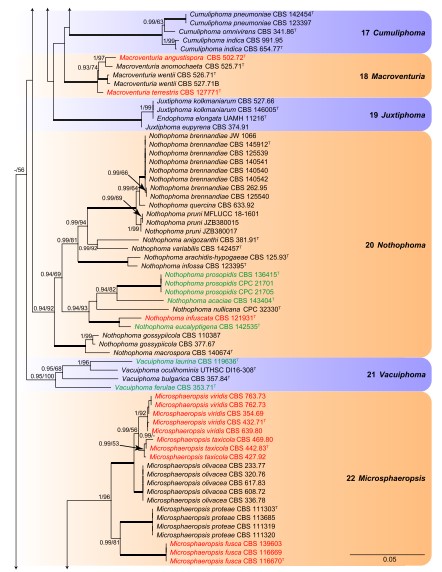
Fig. 1. (Continued).
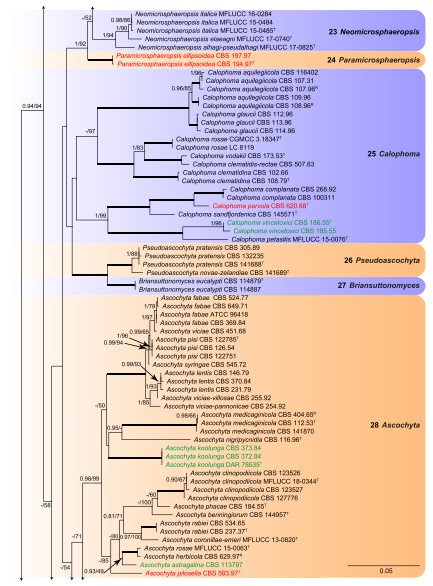
Fig. 1. (Continued).
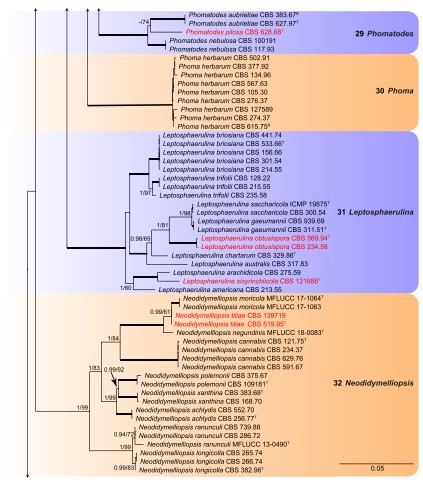
Fig. 1. (Continued).
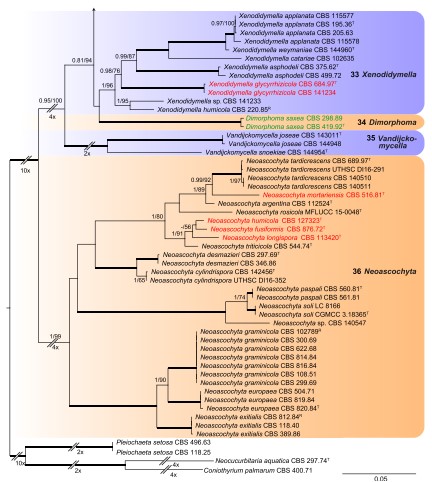
Fig. 1. (Continued).

Fig. 22. Sclerotiophoma versabilis (CBS 876.97). A– B. Colony on OA (front and reverse). C–D. Colony on MEA (front and reverse). E– F. Colony on PDA (front and reverse). G. Pycnidia forming on OA. H. Pycnidium. I. Conidia. Scale bars: H = 50 μm; I = 10 μm.
